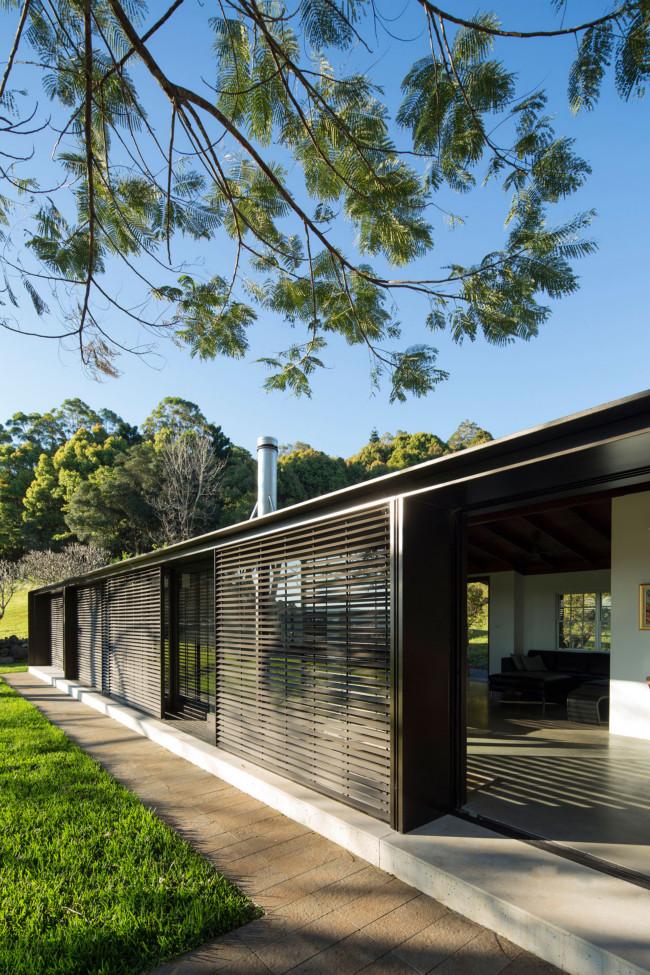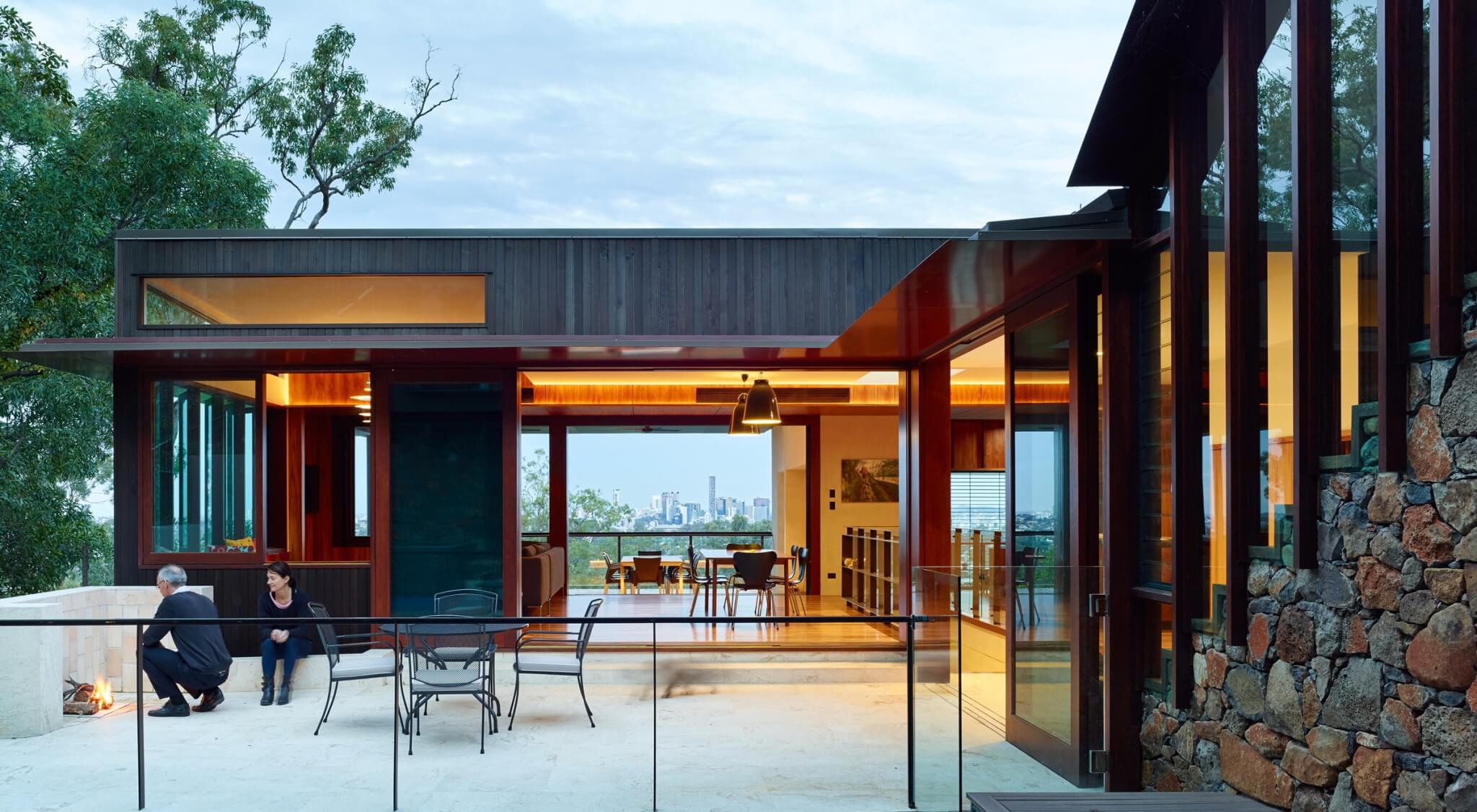Leading Trends in Residential Design You Should Know Concerning
As domestic style remains to advance, several compelling fads are forming the method we make and occupy our space. Trick growths such as lasting structure methods, the assimilation of smart home modern technology, and the rise of modular homes highlight a significant change in the direction of both functionality and environmental duty. Additionally, ideas like open strategy living and biophilic layout are redefining our interaction with area and nature. Understanding these patterns not only notifies style selections but also exposes more comprehensive implications for way of life and area - residential house architect. What might these innovations imply for the future of property living?
Lasting Structure Practices
An increasing number of residential projects are welcoming lasting structure methods, driven by a growing understanding of environmental impact and power effectiveness. This shift is characterized by the integration of green products, energy-efficient styles, and ingenious building methods. Property owners and home builders are increasingly focusing on using renewable energies, such as bamboo and recycled steels, which not only reduce the carbon impact yet additionally improve the sturdiness and aesthetic allure of residential or commercial properties.
Integrating energy-efficient systems is another essential facet of lasting structure - residential house architect. Features such as high-performance insulation, energy-efficient home windows, and solar panels are becoming criterion in new household styles. These components not only add to reduced energy intake however additionally supply significant long-term financial savings for house owners
Additionally, the format of sustainable homes often stresses natural light and ventilation, reducing the dependence on artificial illumination and environment control systems. Landscaping techniques, such as xeriscaping, further advertise sustainability by minimizing water use.
As the demand for sustainable living remedies remains to climb, the domestic style sector is poised to introduce and adapt, making sure that future homes are not just environmentally accountable yet also comfortable and useful for their occupants. - residential house architect
Smart Home Innovation
Smart home modern technology is revolutionizing the method house owners interact with their living areas, boosting energy, safety and security, and benefit monitoring. This innovative approach integrates various devices and systems, allowing users to control their homes remotely or through automated processes. Central to this pattern is the use of wise gadgets such as thermostats, illumination, safety and security cams, and home appliances, all linked through the Web of Things (IoT)
One of the most appealing attributes of clever home modern technology is the capability to personalize settings for optimal energy efficiency. Homeowners can check power usage and adjust cooling, lighting, and home heating based upon their regimens, substantially decreasing utility prices. Advanced safety systems geared up with clever locks and monitoring electronic cameras supply peace of mind, allowing remote monitoring and signals to prospective security breaches.
Assimilation with voice-activated assistants boosts user experience, permitting property owners to regulate gadgets with simple voice commands. As innovation proceeds to develop, the possibility for smart home systems to enhance top quality of life expands, making them an important factor to consider in modern household architecture. Eventually, clever home technology is not simply a fad but an essential change towards much more smart living environments.
Open Concept Living
Open principle living has become a specifying function in modern household design, identified by the removal of typical barriers between areas. This design viewpoint advertises fluidity and connectivity within the home, permitting for a smooth change between areas such as the kitchen, dining, and living spaces. By getting rid of wall surfaces and dividings, open principle layouts create a sense of spaciousness, promoting an inviting environment that improves social interaction.

In addition, this technique to residential style aligns with minimalism, concentrating on useful simplicity and visual coherence. Homeowners appreciate the versatility of these designs, which can be conveniently adapted to show individual style with furnishings plan and style. As open idea living proceeds to gain traction, it continues to be a testament to progressing family members dynamics and the wish for homes that boost connection and comfort.
Biophilic Layout
Biophilic design has come to be increasingly considerable in household architecture, emphasizing the innate link in between humans and nature. This style ideology seeks to integrate all-natural elements into living areas, therefore cultivating a sense of wellness and boosting the quality of life for passengers. By including attributes such as all-natural light, vegetation, and organic materials, biophilic style promotes a harmonious partnership in between interior environments and the environment.
Secret aspects of biophilic style include big windows that supply unblocked sights of outside landscapes, living wall surfaces that present plant right into insides, and go to this website open flooring strategies this that urge air movement and all-natural light infiltration. Water features, both inside and outside the home, serve to create relaxing environments and improve sensory experiences.
Additionally, making use of sustainable materials not only supports environmental stewardship but also contributes to much healthier indoor air high quality. As understanding of environmental issues increases, property owners are progressively prioritizing designs that mirror their connection to nature. In significance, biophilic style not only elevates visual allure however additionally addresses psychological and emotional requirements, making it an essential pattern in modern property style.
Modular and Prefab Houses

In addition, prefab and modular homes are designed with sustainability in mind. Many producers utilize energy-efficient systems and environment-friendly materials, such as solar panels and advanced insulation techniques, contributing to decreased energy consumption and lower energy costs for home owners. The adaptability of style choices permits customization, providing to varied useful needs and aesthetic preferences.
As the demand for inexpensive housing remains to increase, modular and prefab homes offer a sensible option, dealing with both economic and ecological obstacles. Neighborhoods are increasingly recognizing the potential of these frameworks, integrating them right into metropolitan and rural setups. Generally, the trend towards modular and prefab homes signifies a shift toward more lasting, efficient, and versatile living atmospheres, making them a pivotal element of contemporary household architecture.
Verdict
In final thought, the evolving landscape of property style showcases considerable fads that prioritize sustainability, health, and innovation. Sustainable building practices and wise home modern technologies improve performance and convenience, while open idea living and biophilic layout foster social interaction and a connection to nature. In addition, the rise of modular and prefab homes supplies customizable and budget friendly services, showing a broader shift towards useful and accountable living. These trends collectively underscore a commitment to producing unified and ingenious household settings.
Trick developments such as sustainable structure techniques, the assimilation of wise home modern technology, and the surge of modular homes emphasize a substantial change towards both functionality and environmental duty.The increase of prefab and modular homes has transformed the household design landscape, providing innovative solutions for reliable and sustainable living.Additionally, modular and prefab homes are made with sustainability in mind. Generally, the pattern toward prefab and modular homes represents a shift towards much more lasting, effective, and adaptable living settings, making them an essential aspect of modern domestic design.
Sustainable structure practices and clever home innovations enhance effectiveness and convenience, while open principle living and biophilic design foster social communication and a connection to you could try these out nature.